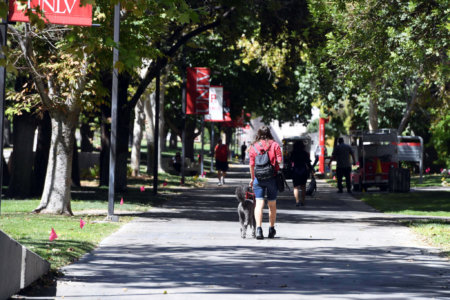
Many international students dream of getting accepted into an Ivy League university — but it is notoriously hard to achieve this. Although the eight private research universities in the Northeastern US S received 311,948 applications for the Class of 2023, the acceptance rate was 6.78%, which was a record low at the time.
While getting in may feel close to impossible, transferring to an Ivy League university is within the realm of possibility. Saloni Verma, a content creator who graduated from Cornell University and Harvard Medical School, shared in her Youtube video that all eight Ivy League schools do accept transfer applications from international students.
This begs the question: how do you successfully transfer to one of the eight Ivy League universities? We draw on her advice and break down her step-by-step guide on how you can make your Ivy League dream a reality:
How to transfer to an Ivy League university as an international student
Why transfer to an Ivy League university?
Verma’s main advice for students is to stay “ethical and really true” to themselves. It’s essential to dig deep and question why you’re beginning the process of transferring in the first place.
Lying in your transfer application is a big red flag, and your reasons for transferring should be genuine. You could decide to transfer midway through your programme upon realising that your education pathway would be more suitable in the US than in your home country. Or you could choose to switch to a different degree.
Personalise your reason to transfer so you can showcase it in your transfer application essay and stand out from the rest of the crowd.
Requirements
Determining the transfer requirements of each uni is crucial for you to understand what you need to succeed in your application. Start by looking at the university’s website.
Take, for example, Cornell University. If you Googled “transfer application Cornell,” you should be able to view the university’s website in the search result. A rule of thumb is to always refer to the primary source (Cornell University’s website), so you’ll be updated with the latest information on transferring to the university.
Click on the checklist to view all you need to do as a transfer student. Generally, Cornell’s transfer application will require you to submit the following:
- A Transfer Common Application, which includes an Academic Evaluation, College Report, Mid-Term Report, Cornell University Transfer Questions and Writing Supplement
- Official secondary/high school and all college transcripts
- Items required by the Cornell undergraduate college or school to which you have applied
As you look through the transfer requirements, check if the university specified when you could transfer, as some only allow students to transfer in their second year.
It’s #CommonAppDay — the start of the college journey for so many students! The 2022-23 Common App is now open for applications, with more than 1,000 member schools for you to explore. Visit https://t.co/uxtj6zngLh now to get started! pic.twitter.com/KvegxtgFMn
— Scholarship America (@ScholAmerica) August 1, 2022
Creating your account on the Common App portal
You’ll need to create an account on the Common App portal. It functions similarly to UCAS, where you can apply to multiple universities through a single app. The best part is that you don’t have to pay a dime to create an account.
When you log on to the portal, you’ll see two types of logins: first year and transfer student. Once you pick the “transfer student” option, answer all the questions shown in the survey after you have logged on to your account.
An important question concerns the credits you have earned in college. In most cases, students will not be able to transfer if they have only completed one semester. Most Ivy League universities will require students to complete one year of study.
You can apply to transfer to an Ivy League school as an undergraduate or postgraduate student.
How to apply
Once you have answered the survey, a window will display a list of schools accepting transfer students, the deadline to apply, the application fee (if any) for your transfer application, and the school’s location. Many universities do not charge students as they apply to transfer through the Common App portal.
Click the “Skip for now” button to access your dashboard. Here, you fill up your personal information, academic history, supporting information, and programme materials. You can also add a specific programme you’re interested in by clicking the “Add Programme” button.
As a transfer student, you will spend the bulk of your time completing the supporting information portion of your application.

We encourage you to utilise any form of experience to craft a personal narrative in your transfer application. Source: Oli Scarff/AFP
Required documents
The portion is divided into four parts: Experiences, Achievements, Documents, and Affirmation Statements. Here’s what you should know about each section:
- Experiences – this list includes your extracurricular activities, such as community service, work experience, and internships, among others
- Achievements – you can write about your academic and professional achievements
- Documents – you can attach your College Report, Mid Term Report, CV and transfer application essay
- Affirmation Statements – this confirms the authenticity of your application
Writing your transfer application essay
There is no fixed format on how you should write this essay, but here are a few things to keep in my mind as you write:
- Establish some of your core values
- Explain why you chose your current school (the one you’re leaving) in the first place
- Offer specific reasons as to why you like to leave your current school
- Show how you’ve made the best out of your current situation
- Think about how an Ivy League education will help you achieve your personal and professional goals
- Outline how your chosen Ivy League university will aid you in realising your goals
- Conclude your essay (bonus point if you can do it memorably)
Submitting your application
Submit your application once you have completed your details. The Common App portal allows you to apply to different programmes and conveniently check the status of each application.










